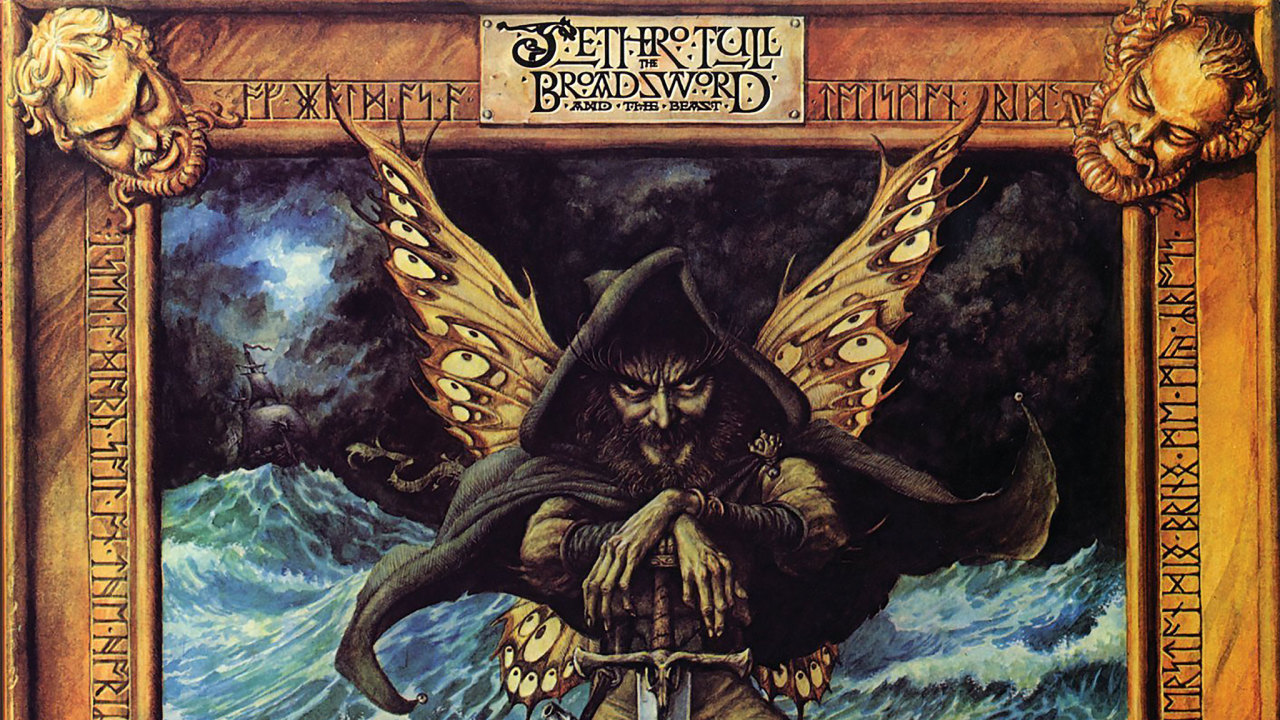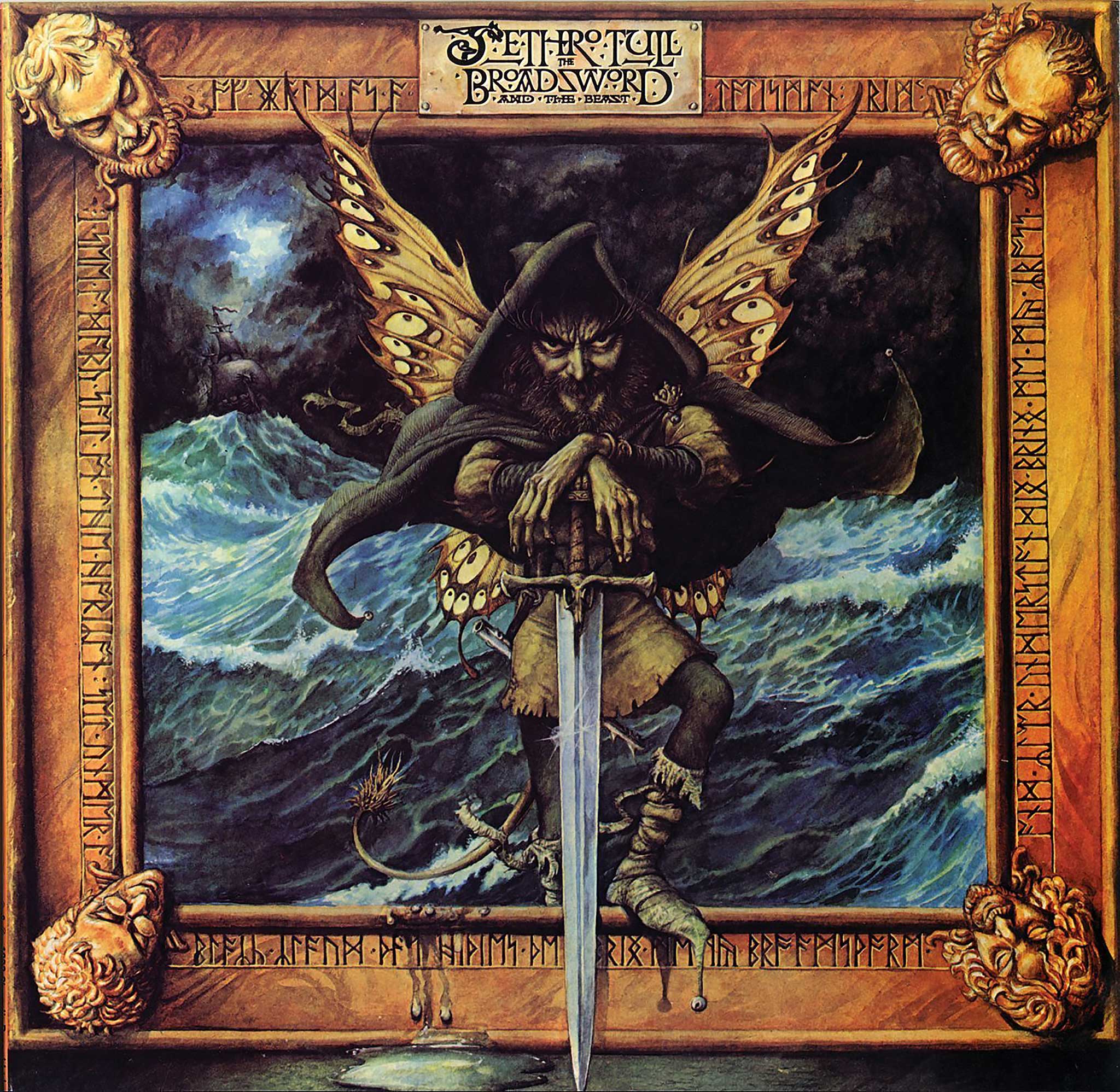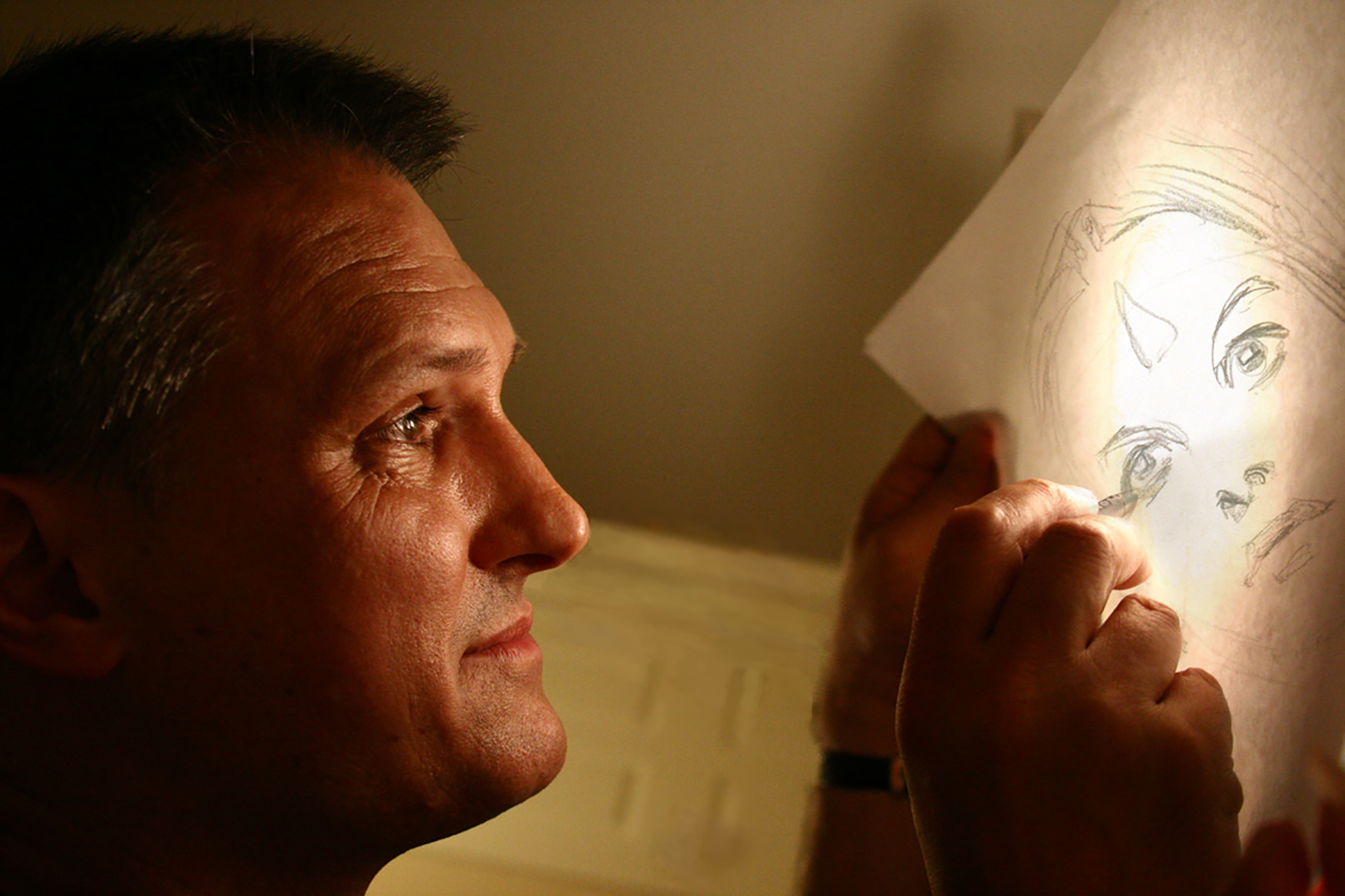Cover Story: Jethro Tull - Broadsword And The Beast
Uncovering the stories behind great prog album artwork...

Artist Iain McCaig remembers a fine time working with Jethro Tull mainman Ian Anderson…
Jethro Tull - Broadsword And The Beast
(Chrysalis, 1982)
For Iain McCaig, working with Jethro Tull was a labour of love. He was already a huge fan, when commissioned to do the art for the band’s 14th studio album. It took McCaig 14 days to complete the artwork, and he even admits to completing the last touches while en route to deliver it on the tube. McCaig even got engaged as he was working on this. Now involved in movies – writing, desiging and direction – he’d still love to paint Ian Anderson’s portrait!

How did you meet the band?
“I was a young illustrator at the time, and got a message to call my former agent, Artist Partners, about a possible commission. I called them from a pay phone in Charing Cross Station. They told me [renowned fantasy illustrator] Brian Froud had been asked to do a record cover, but he was too busy to accept and would I consider the project? When they said the words ‘Jethro Tull’, I whooped so loud I’m sure people thought somebody had fallen under a train.”

How did you come up with the idea?
Sign up below to get the latest from Prog, plus exclusive special offers, direct to your inbox!
“Ian gave me a cassette with his work-in-progress songs for inspiration. We discussed a lot of ideas together during that first meeting. I honestly don’t remember who came up with what, but the upshot was that I went home and sketched an image of a bard tormented by the music from a pan pipe-playing beastie on his shoulder. Ian pointed to the fey little fellow and said: “That’s our cover”.
“The final image was a merging of ‘Beastie’ and ‘Broadsword’. I had just discovered the Narnia books and was struck with an idea from Voyage Of The Dawn Treader, where a painting of a sea comes to life and begins to spill out of the frame. The lyrics from Ian’s song - “I see a dark sail, on the horizon, set under black clouds, that hide the sun” - combined with the Beastie from my first sketch, completed the picture.
“I’m also a big fan of puzzle pictures, and decided to leave some ‘easter eggs’ in the art. Hence the faces of the band - Dave Pegg, Martin Barre, Peter Vitesse and Gerry Conway - on the four corners of the picture frame, and the carved runic inscription that says… ah, but that would be telling!”

Had you heard the music beforehand (and what did you think)?
Jethro Tull were, and are still, one of my favorite bands of all time. Aside from that cassette that Ian gave me of his his work-in-progress songs (with lines like “I see a Broadsword, dum diddly-um dum dee”), the band generously allowed me to sketch while they recorded several of the songs in the studio. There aren’t many commissions like this one!
What was the concept behind the cover design?
As I said above, it was a combination of inspiration from Ian’s lyrics and my fascination with one of the Narnia books. Is there a story behind the image? The answer is yes, and no. I have my own ideas, but if you listen to the music, look at the cover and unleash your imagination, you’ll find many more of your own.

What was the reaction to the cover from the band, label and fans?
“Jethro Tull and Chrysalis both seemed pleased with the cover. For some of The Broadsword… concerts, they built the entire picture frame around the stage, with the dark-sailed ship crashing through it at the end. Ian also performed with a life-sized articulated Beastie on his shoulders, complete with flashing eyes and real bones beneath the latex, which sat in my attic room after the tour and scared the crap out of visitors. As for the fans, they have been very kind. Ian says he’s seen the cover image tattooed over countless body parts, and I was greeted by my cover painting on banners, posters and T-shirts and other memorabilia at a recent Tull concert. Can any artist ask for more?”
Malcolm Dome had an illustrious and celebrated career which stretched back to working for Record Mirror magazine in the late 70s and Metal Fury in the early 80s before joining Kerrang! at its launch in 1981. His first book, Encyclopedia Metallica, published in 1981, may have been the inspiration for the name of a certain band formed that same year. Dome is also credited with inventing the term "thrash metal" while writing about the Anthrax song Metal Thrashing Mad in 1984. With the launch of Classic Rock magazine in 1998 he became involved with that title, sister magazine Metal Hammer, and was a contributor to Prog magazine since its inception in 2009. He died in 2021.

